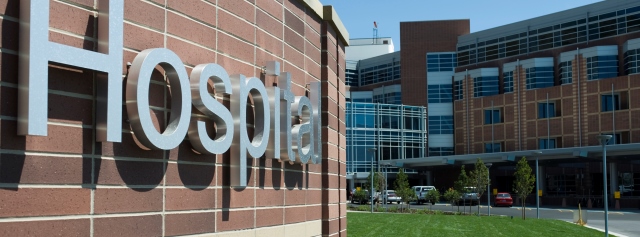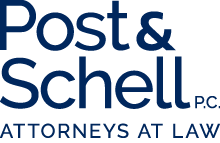

Nonprofit Hospitals and State and Local Tax Exemptions: An Uncertain State of Affairs

A recent Illinois decision on the tax-exempt status of nonprofit hospitals provides a reminder of the uncertainty that surrounds the standards governing exemptions for hospitals and other nonprofits at the state and local level. As discussed in greater detail below, the Illinois Supreme Court ruled in September that hospitals seeking a property tax exemption must still satisfy the requirement under the state constitution that their property is “used exclusively” for charitable purposes, notwithstanding recent legislation intended to make the process of qualifying for an exemption more predictable. Oswald v. Hamer, No. 122203, 2018 Ill. LEXIS 649 (Sept. 20, 2018).
Uncertainty surrounding tax-exempt status for state and local taxes is a familiar problem for hospitals and other nonprofits in Pennsylvania, which must navigate both a constitutional test under Hospital Utilization Project v. Commonwealth, 507 Pa. 1, 487 A.2d 1306 (1985), and a statutory test under the Institutions of Purely Public Charity Act, 10 P.S. §§ 371-385, which is known as Act 55. In light of the uncertainty, many have chosen to enter into PILOT (payments in lieu of taxes) and SILOT (services in lieu of taxes) agreements to avoid expensive litigation.
The problem shows no signs of going away. For example, the City of Allentown is reportedly imposing business privilege taxes on nonprofits. Given this environment, hospitals and other nonprofits in Pennsylvania should pay attention to developments from other jurisdictions, as they can provide insight into arguments they may be hearing in the future.
After briefly contrasting the federal system for classifying exempt organizations as charities with principles of state law, this E-Flash will review Oswald and other recent cases to illustrate the uncertainty that hospitals face in establishing tax-exempt status, and it will then close with a discussion of what the implications of Oswald and other cases may be for Pennsylvania-based hospitals and other nonprofits in the Commonwealth.
What Is A Charity?
Whether a nonprofit is a “charity” is determined differently at the federal level and the state and local level.
Section 501(c)(3) of the Internal Revenue Code provides for certain types of entities to qualify for tax-exempt status, but not all tax-exempt organizations are created equal. Instead, they are classified as either private foundations or public charities. The default position is that they are private foundations, which is an undesirable classification because there are lower limits on the deductibility of contributions and there are an array of applicable excise taxes. A hospital that qualifies for an exemption under section 501(c)(3), however, is automatically considered to be a public charity under section 509(a)(1) and section 170(b)(1)(A)(iii).
At the state and local level, the picture is far less clear. Using Pennsylvania as an example, an exemption can only be provided to an entity which shows that it is a “purely public charity” within the meaning of the Pennsylvania Constitution. Under the “HUP test,” a nonprofit must show that it meets the following requirements:
- The organization “[a]dvances a charitable purpose”;
- It “[d]onates or renders gratuitously a substantial portion of its services”;
- The organization “[b]enefits a substantial and indefinite class of persons who are legitimate subjects of charity”;
- It “[r]elieves the government of some of its burden”; and
- The organization “[o]perates entirely free from private profit motive.”
Hospital Utilization Project v. Commonwealth, 487 A.2d at 1317. The mere fact that a nonprofit operated a hospital would not be sufficient to satisfy the HUP test.
Because the HUP test proved to be subjective and unpredictable, Pennsylvania enacted Act 55, which offered concrete tests, particularly for the level of community service required to make an institution eligible for an exemption. But any hope that Act 55 would make the standards for tax-exempt status clearer ended in 2012 when the Supreme Court held that an entity seeking exempt status must satisfy both the HUP test and the requirements of Act 55.1
As will be seen, Oswald and recent decisions from other states reinforce the uncertainty faced by hospitals and other nonprofits concerning their ability to maintain a property tax exemption.
Oswald: The Impact of “Clarifying” Legislation
In Oswald, the Illinois Supreme Court addressed a statute that established a concrete test to determine whether a hospital should receive a property tax exemption. The relevant statute provided as follows:
A hospital applicant satisfies the conditions for an exemption under this Section with respect to the subject property, and shall be issued a charitable exemption for that property, if the value of services or activities listed in subsection (e) for the hospital year equals or exceeds the relevant hospital entity’s estimated property tax liability, as determined under subsection (g), for the year for which exemption is sought.
35 ILCS 200/15-86(c). The services listed in subsection (e) were “[s]ervices that address the health care needs of low-income or underserved individuals or relieve the burden of government with regard to health care services,” including “[f]ree or discounted services provided pursuant to the relevant hospital entity’s financial assistance policy.” 35 ILCS 200/15-86(e).
Under the plain language of the statute, if a hospital’s charitable care or other qualifying services to low-income or underserved individuals exceeded its tax liability, it was entitled to an exemption. The Illinois statute was an elegant solution to the problem of determining when a hospital qualifies for a property tax exemption: Institutions could know with substantial certainty whether they would qualify, and the standard tied the exemption to the public benefits provided by the hospital, requiring the hospital to earn the exemption by providing concrete service to the community.
Much like Act 55, the Illinois statute was the product of uncertainty; it was passed in reaction to the Illinois Supreme Court’s prior decision in Provena Covenant Medical Center v. Department of Revenue, 236 Ill. 368, 925 N.E.2d 1131 (2010) where the Court held that a large hospital system operating six hospitals failed to qualify for a tax exemption because its funds were “generated overwhelmingly by providing medical services for a fee.” Provena, 925 N.E.2d at 1146. The Illinois Supreme Court held that this business model conflicted with a constitutional requirement that a charity’s funds be derived mainly from private and public charity. For good measure, the court held that the hospital system had not shown that it provided charitable care to all who applied for it and did not place obstacles in the way of charitable care. Id. at 1146-47.
While intended to provide greater clarity and predictability, the Illinois statute arguably was inconsistent with the Illinois Constitution, which provides that an exemption can only be granted if the relevant property is “used exclusively for . . . charitable purposes.” Oswald, 2018 Ill. LEXIS 649 at **2 (quoting Ill. Const. 1970, art. IX, § 6). In Oswald, the Illinois Supreme Court addressed a facial challenge to the statute from a plaintiff who argued that it violated the Illinois Constitution.
The court commenced its analysis by considering the relevant provision of the Constitution; the court concluded that it “limits the legislature’s authority to exempt.” Id. at **7. After reviewing the background to the hospital exemption provision, the Supreme Court concluded that the statute was meant to be read in light of the constitutional requirement that exempt property be used “exclusively” for charitable purposes. Id. at **15-**17. As a consequence, the Supreme Court ruled that a hospital seeking a tax exemption must meet both the statutory requirements and the constitutional requirements. Id. at **19.
Although the Supreme Court’s disposition preserved the statute, it also eliminated its benefits. By holding that hospitals must satisfy both the constitutional test and the statutory test, the court maintained the same uncertainty created by Provena. That is particularly problematic because of the holding in Provena that a hospital rendering services for a fee is not a charitable institution, which ignores the economic reality that hospitals are providing discounted services to the elderly and the disabled when they accept Medicare and Medicaid patients.
New Jersey and the “Fiction” of the Nonprofit Hospital
In 2015, the New Jersey Tax Court issued a startling opinion holding that AHS Hospital Corp., the operator of Morristown Memorial Hospital, essentially operated on a for-profit basis. AHS Hosp. Corp. v. Town of Morristown, 28 N.J. Tax 456, 2015 N.J. Tax LEXIS 12 (2015). The court’s opinion finished with a rhetorical flourish, suggesting that “modern non-profit hospitals are essentially legal fictions. AHS, 28 N.J. Tax at 536 (footnote omitted) (emphasis in the original). Unfortunately, the case received no further review, as the parties agreed to settle for $15.5 million paid over ten years.2
AHS turned on the fact that the hospital had a variety of relationships with for-profit enterprises and was unable to segregate them to the Tax Court’s satisfaction: “Here, the court is unable to discern between the non-profit activities carried out by the Hospital on the Subject Property, and the for-profit activities carried out by private physicians.” 2015 N.J. Tax at 501. Since the burden of proof was on the hospital, its inability to account for the activities of for-profit practitioners proved fatal. The problem was that physicians employed by the hospital and physicians in private practice both had access to the entire facility: “In fact they all worked throughout the Subject Property without limitation or restriction.” Id. The Supreme Court of Connecticut reached a similar conclusion in a case involving a nursing home that also provided short-term rehabilitation services. See St. Joseph’s Living Ctr., Inc. v. Town of Windham, 290 Conn. 695, 966 A.2d 188, 221-22 (2009). The type of segregation that the New Jersey Tax Court sought is probably impracticable; hospitals are able to develop state-of-the-art facilities in part because those facilities will also be used by physicians in private practice whose patients pay more than patients reliant upon Medicare, Medicaid, or charitable care.
AHS was a complex enterprise; it also owned five captive professional corporations through which physicians practiced, it had an affiliated for-profit management company, and it made loans to it and to other related for-profit entities. AHS also owned an affiliated captive insurance company in which it invested capital. All of these relationships also played a role in the court’s determination that AHS was actually a for-profit enterprise that did not qualify for a tax exemption. Id. at 513-14. Yet many of these types of relationships are common. Professional liability insurance is obviously vital for a hospital and can be a significant expense; the use of a captive may lower the hospital’s costs, permitting it to commit the excess funds to improved facilities or additional charitable care. Consequently, the use of a captive may well advance a hospital’s charitable mission.
The court also criticized the hospital’s compensation practices. Although AHS presented testimony that its approach to compensation (including consideration of peer institutions) was consistent with best practices and met IRS standards, the Tax Court held that the IRS standard was not good enough: “Clearly, the expert provided no compelling reason why the court should employ the IRS standard other than it’s generally the only one out there.” Id. at 522.
Implications for Pennsylvania Institutions
First, Oswald reinforces Pennsylvania’s experience with “clarifying statutes,” which really do not clarify anything. Consequently, absent an amendment to the constitution, or a change of heart by our Supreme Court, the HUP test is here to stay.
Second, hospitals and other nonprofits should expect state and local governments to adapt approaches from other jurisdictions to the HUP test. For instance, many of the arguments deployed by Morristown in AHS could readily be asserted under the fifth prong of the HUP test, which requires that a charity operate “entirely free from private profit motive.” HUP, 487 A.2d at 1317 (emphasis added), and press reports indicate that the City of Allentown apparently focused on compensation practices in assessing nonprofits for business privilege taxes. While a hospital could perhaps restructure some of its operations to address some of the concerns identified by the Tax Court in AHS, it would be difficult to reconcile the court’s view that doctors in private practice should have restrictions on the facilities that they can use with the normal operation of a hospital.
In a similar vein, the fact that the Oswald court did not revisit its decision in Provena may lead municipalities to focus on the fact that the volume of uncompensated services provided by hospitals is typically modest, with much of the public benefit they provide coming from the discounted services they furnish to Medicare and Medicaid patients. In St. Margaret Seneca Place v. Board of Property Assessment, 536 Pa. 478, 640 A.2d 380, 384 (1994), the Supreme Court of Pennsylvania held that accepting governmental payments was not barred under the HUP test, but the Court also emphasized that the nonprofit had demonstrated that the payments it received did not allow it to recover its costs. Not all institutions have been able to make that showing, so the issue remains ripe for litigation even though the legal principle is settled. See ARC Human Servs. v. Clearfield Cty. Assessment Office & Tax Bureau, 120 A.3d 465, 469-71 (Pa. Commw. 2015).
Faced with the prospect of protracted litigation, many charities understandably elect to settle, entering into PILOT and SILOT agreements. Act 55 gave additional impetus to these arrangements, indicating that it was intended “to encourage financially secure institutions of purely public charity to enter into voluntary agreements or maintain existing or continuing agreements for the purpose of defraying some of the cost of various local government services.” 10 P.S. § 372(a)(7).
While PILOT and SILOT agreements may make sense for individual institutions, their impact as a matter of public policy is somewhat mixed. To some extent, they probably stunt the development of case law. For example, we do not know what would have happened in the AHS case on appeal because the parties elected to settle. In addition, Pennsylvania has a strong public policy that taxes should be uniform, which is reflected in its Constitution.3 PILOT and SILOT agreements undercut this principle, as some charities may pay more for public services than their peers.
Hospitals and other charities need to understand that the relative strength of their claim to an exemption will play a role in the negotiation of a PILOT or SILOT agreement because the terms of a settlement are tied to the merits of the dispute. As a consequence, PILOT and SILOT agreements do not eliminate the need for hospitals and other charities to carefully evaluate their operations to determine whether their case for an exemption can be bolstered.
Disclaimer: This E-Flash does not offer specific legal advice, nor does it create an attorney-client relationship. You should not reach any legal conclusions based on the information contained in this post without first seeking the advice of counsel.
1 Mesivtah Eitz Chaim of Bobov v. Pike Cty. Bd. of Assessment Appeals, 615 Pa. 463, 44 A.3d 3, 7-9 (2012).
2 Jaclyn Fabean Cherry, Property Tax Exemptions for Charitable Nonprofit Organizations: A Uniform Possibility, 18 Wake Forest J. of Bus. & Intell. Prop. L. 1, 15-16 (2017).
3 “All taxes shall be uniform, upon the same class of subjects, within the territorial limits of the authority levying the tax, and shall be levied and collected under general laws.” Pa. Const. Art. VIII, § 1


